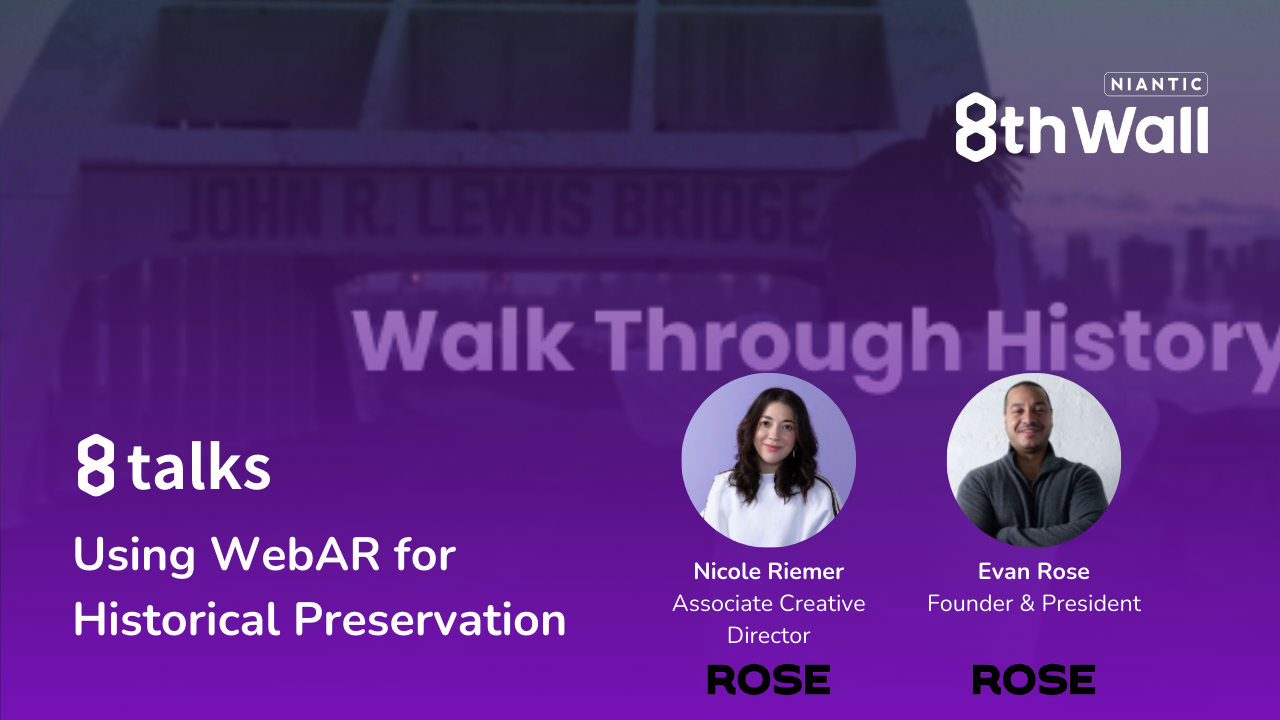8th Wall Blog
Using WebAR for Historical Preservation
Learn best practices from ROSE Digital to bring your historical experiences to life

In our recent 8talks session, "Using WebAR for Historical Preservation," we had the privilege of witnessing firsthand the convergence of technology and history. Nicole Riemer and her team at ROSE Digital shared their groundbreaking work on three WebAR experiences developed for Black History Month. These experiences not only celebrated pivotal moments and figures in Black history but also set a benchmark for how we can use WebAR to make history accessible to all.
ROSE Digital's work for Black History Month serves as an example of how digital innovation can enhance our understanding and appreciation of history. During the 8Talks session, Nicole laid out some best practices developers will find useful in creating their own historically accurate WebAR experiences. Here are the seven key takeaways from the event:
- Start with a Strong Narrative: Your WebAR experience should be anchored in a compelling story. Historical preservation is not just about facts but about telling those facts in a way that resonates with your audience. Consider what makes your chosen piece of history significant and how you can convey its impact through augmented reality.
- Prioritize Authenticity: When dealing with historical content, accuracy and respect for the subject matter are paramount. Work closely with historians, educators, and community leaders to ensure your representations are factual and sensitive to cultural contexts. Places to start your research include public museum websites, .edu sites, books, and recognized organizations.
- Leverage Diverse Media Types: WebAR allows for the integration of various media, including text, images, video, and 3D models. Use these tools to create a rich, immersive experience that can engage users in multiple ways, making the historical content more relatable and impactful. Sourcing images can be difficult and in some cases expensive. For example, using something like AP will require renewing a license annually. Public libraries, the Library of Congress, and sites like Archive.org are good places to start in finding materials you may want to use.
- Focus on Accessibility: Ensure that your WebAR experiences are easily accessible to a broad audience. This means optimizing for different devices and considering users with disabilities. The goal is to make history accessible to everyone, regardless of their physical location or technological capabilities.
- Engage the Community: Involve the community in your project, both in its development and its dissemination. This can provide valuable insights into the historical content and help spread the word about your experience. Community engagement can also offer a platform for people to share their own stories and connections to the history you are preserving.
- Making the Cut: How do you know what information to include? Begin with extensive research, aiming to gather a broad array of information from at least five diverse sources. Prioritize information that is confirmed by multiple sources. Select information that aligns with and enriches the narrative you wish to convey through your WebAR experience. However, be cautious not to exclude significant facts simply because they may not seamlessly fit your narrative. Omitting relevant information can inadvertently lead to a skewed representation of history.
- Transparency with Citations: Incorporate citations directly into your WebAR experience and provide a comprehensive list of sources. This transparency not only bolsters the credibility of your work but also allows users to explore the historical subjects in greater depth on their own.
The endeavors of ROSE Digital, particularly their work on Black History Month, exemplify how WebAR can transcend traditional boundaries of historical preservation. By following these best practices, developers have the opportunity to contribute to a future where history is not only remembered but experienced. To put ROSE Digital’s suggestions into action, join our Time Capsule Challenge! You have until March 25th to sign up and submit an experience for a chance to win from a prize pool of $15,000.
